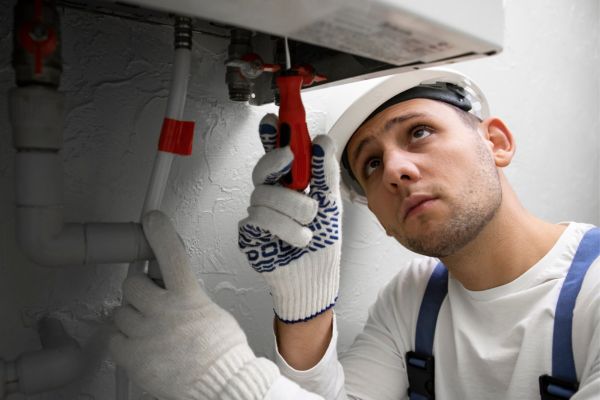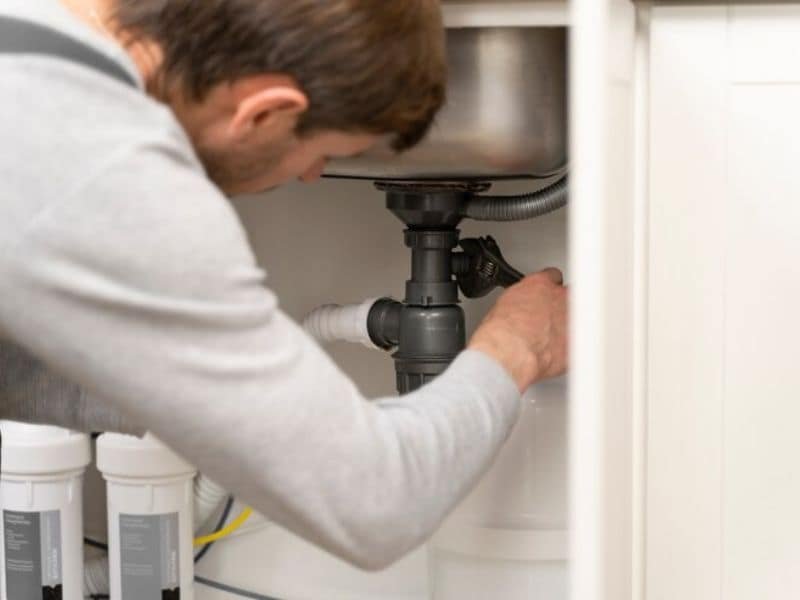Water heaters are essential appliances in homes, providing hot water for bathing, cooking, and cleaning. However, over time, sediment accumulates at the bottom of the tank, reducing efficiency and potentially damaging the unit. Regular maintenance, including sediment removal, ensures your water heater operates effectively and extends its lifespan. This guide will walk you through the step-by-step process of cleaning sediment from a water heater.
Why It’s Important to Remove Sediment from a Water Heater
Sediment buildup in a water heater can cause several problems, including:

- Reduced Efficiency: A layer of sediment insulates the heating element from the water, requiring more energy to heat the water.
- Decreased Hot Water Supply: The sediment layer reduces the available space for hot water, resulting in less hot water output.
- Increased Energy Bills: Since the heater has to work harder, energy consumption increases, leading to higher utility bills.
- Potential Damage: Sediment can cause overheating, corrosion, or even damage to the tank, leading to costly repairs or replacements.
To keep your water heater running efficiently, it’s recommended to flush the sediment at least once a year.
READ MORE: How much does home depot charge to install water heater
Tools and Materials Needed
Before starting, gather the following tools and materials:
- A garden hose
- A bucket (optional)
- An adjustable wrench
- Safety gloves and goggles
- A flathead screwdriver (if needed for the drain valve)
- A towel or rag
Step-by-Step Guide to Cleaning Sediment from a Water Heater
Step 1: Turn Off the Water Heater
For gas water heaters, turn the thermostat to the “Pilot” setting. If you need to turn it off completely, switch off the gas supply.
For electric water heaters, switch off the power at the circuit breaker to avoid electric shock.
Step 2: Shut Off the Water Supply
Locate the cold water shut-off valve on top of the water heater and turn it off. This prevents new water from entering the tank while you drain it.
Step 3: Attach a Hose to the Drain Valve
Connect one end of a garden hose to the drain valve at the bottom of the heater. Place the other end in a safe drainage area, such as a floor drain, outside, or into a bucket if necessary.
Step 4: Open a Hot Water Faucet
To allow proper drainage and prevent a vacuum from forming, open the hot water tap on a nearby sink. This releases pressure and helps water flow smoothly.
Step 5: Drain the Tank
Carefully open the drain valve using a screwdriver or wrench if needed. Hot water and sediment will start flowing out through the hose. Be cautious, as the water may be very hot.
If the water drains slowly, sediment may be clogging the valve. In this case, turn the cold water supply back on for a moment to stir up the sediment and improve flow.
Step 6: Flush the Tank
Once the tank is empty, briefly turn the cold water supply back on while the drain valve remains open. This will help flush out remaining sediment. Repeat this process until the water runs clear.
Step 7: Close the Drain Valve and Refill the Tank
After flushing, close the drain valve tightly and remove the hose. Turn the cold water supply back on to refill the tank.
Keep the hot water faucet open until a steady stream of water flows out, indicating the tank is full and free of air bubbles.
Step 8: Restore Power or Gas Supply
For an electric heater, turn the circuit breaker back on.
For a gas heater, reignite the pilot light if necessary and set the thermostat back to the desired temperature.
Step 9: Check for Leaks
Inspect the drain valve and hose connection for any leaks. Tighten if needed to prevent water damage.
How Often Should You Flush a Water Heater?
The frequency of flushing depends on water quality:
- Once a year for most homes with moderate water hardness.
- Every six months if you have hard water, which causes faster sediment buildup.
- Every two years if you use a water softener, as softened water reduces mineral deposits.
READ MORE: How to Fix a Broken Pipe Inside a Wall
Signs That Your Water Heater Needs Flushing
If you’re unsure whether your water heater needs maintenance, watch for these signs:
- Rumbling or popping noises from the heater due to trapped sediment.
- Discolored or cloudy water coming from the hot water tap.
- Lower water temperature despite setting the thermostat correctly.
- Longer heating times, indicating inefficient heating due to sediment buildup.
Additional Tips for Water Heater Maintenance
- Install a water filter to reduce sediment entering the tank.
- Use a water softener if you have hard water to minimize mineral buildup.
- Check the anode rod annually to prevent corrosion inside the tank.
- Insulate the heater to improve energy efficiency and reduce standby heat loss.
FAQs: How to Clean Sediment from a Water Heater
1. Why is sediment buildup in a water heater a problem?
Sediment buildup can reduce the efficiency of your water heater, cause rumbling noises, increase energy costs, and shorten the lifespan of the unit. It may also lead to inconsistent water temperatures.
2. How often should I flush my water heater to remove sediment?
It is recommended to flush your water heater at least once a year. If you have hard water, consider doing it every six months to prevent excessive buildup.
3. How do I know if my water heater has sediment buildup?
Signs of sediment buildup include:
- Rumbling, popping, or banging noises from the heater
- Reduced hot water supply
- Water taking longer to heat up
- Higher energy bills
- Discolored or cloudy hot water
4. What tools do I need to flush my water heater?
You will need:
- A garden hose
- A bucket (optional)
- A screwdriver (if needed to open the drain valve)
- Protective gloves and safety glasses
5. How do I flush sediment from my water heater?
Follow these steps:
- Turn off the water heater – For gas heaters, turn the gas valve to “Pilot” or off. For electric heaters, switch off the power at the circuit breaker.
- Turn off the cold water supply – Locate the cold water shut-off valve and close it.
- Attach a hose to the drain valve – Connect a garden hose to the drain valve at the bottom of the tank and place the other end in a safe drainage area.
- Open the drain valve – Allow water to flow out, carrying sediment with it.
- Turn on a hot water tap – Open a nearby hot water faucet to let air in, helping the water drain faster.
- Flush with cold water – Turn the cold water supply back on briefly to stir up and remove remaining sediment. Repeat until the drained water runs clear.
- Close the drain valve and remove the hose – Make sure it’s tightly closed to prevent leaks.
- Refill and restart the heater – Turn the cold water supply back on, keep a hot water tap open to release air, then restore power or relight the gas burner.
6. Can I use vinegar to clean sediment from my water heater?
Yes, you can use vinegar to help dissolve stubborn sediment. After draining, pour a few gallons of vinegar into the tank, let it sit for a few hours, then flush thoroughly with clean water.
7. Is sediment buildup more common with hard water?
Yes, hard water contains more minerals like calcium and magnesium, which contribute to faster sediment accumulation in your water heater.
8. Can I use a water softener to prevent sediment buildup?
Yes, a water softener can reduce mineral deposits in your water heater, but periodic flushing is still recommended.
9. What happens if I don’t remove sediment from my water heater?
Ignoring sediment buildup can lead to reduced heating efficiency, increased energy costs, heater damage, leaks, or even complete failure of the unit.
10. Should I call a professional to flush my water heater?
Flushing a water heater is a straightforward task that most homeowners can do themselves. However, if you are uncomfortable or experience issues, it’s best to call a plumber.
Conclusion
Regularly cleaning sediment from your water heater ensures it runs efficiently, provides consistent hot water, and lasts longer. By following this step-by-step guide, you can maintain your water heater and avoid costly repairs or replacements. Flush the tank annually and monitor signs of sediment buildup for a trouble-free hot water supply in your home.
Keeping up with simple maintenance tasks like sediment removal can save you money and extend the life of your water heater. Don’t wait until problems arise—schedule a cleaning today and enjoy uninterrupted hot water!

